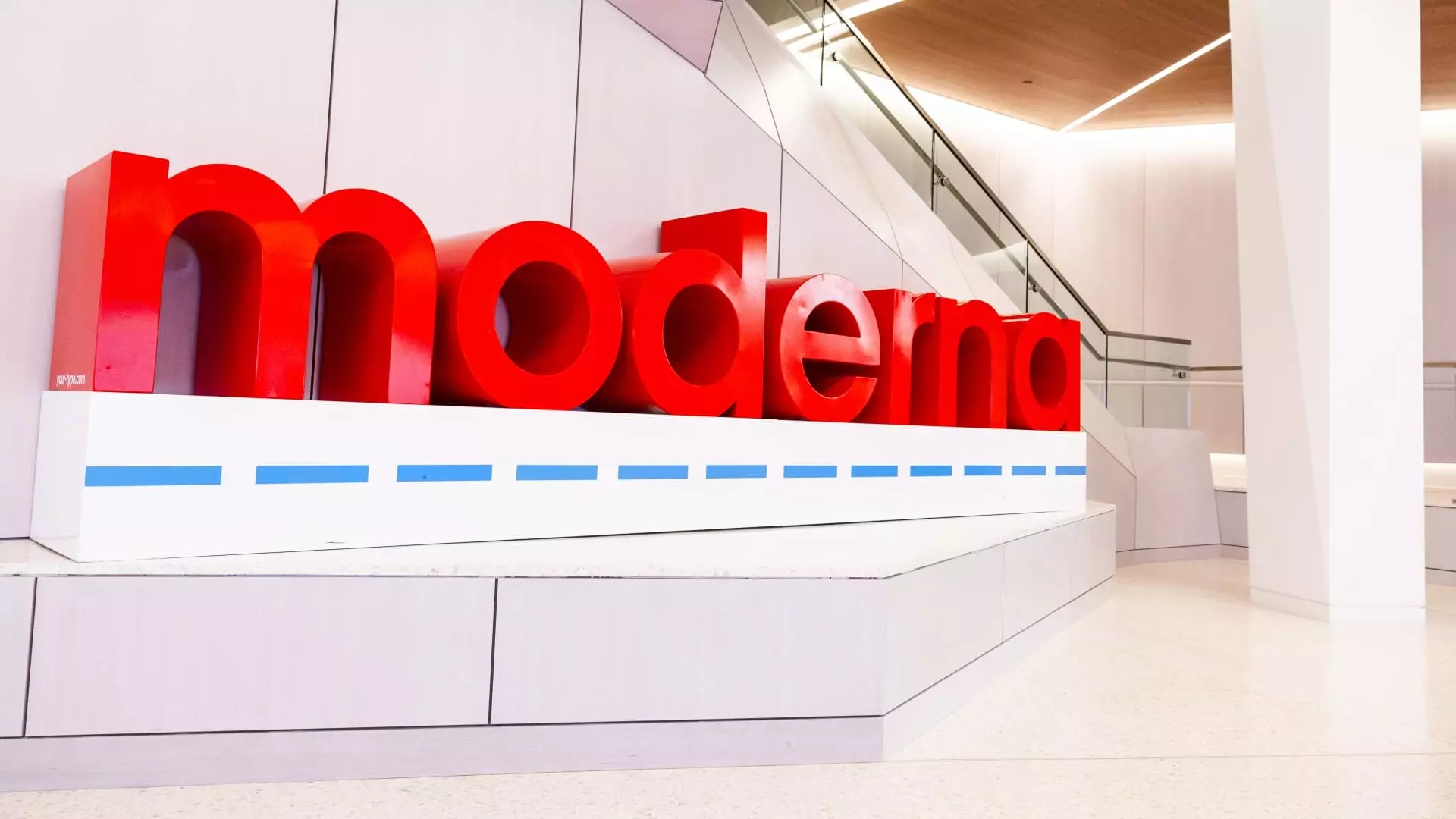Moderna, the biotech company renowned for its groundbreaking COVID-19 vaccine, recently reported its fourth-quarter earnings for 2024, highlighting both progress and ongoing challenges in a rapidly evolving market. Although the company exceeded revenue expectations, it faced a significant net loss that underlines the difficulties of transitioning from a pandemic-driven demand to a more competitive and uncertain landscape.
Fourth Quarter Results: Mixed Signals
The announcement, made on a recent Friday, revealed that Moderna had a net loss of $1.12 billion, translating to $2.91 per share. This figure sharply contrasts with the previous year’s performance, which boasted a net income of $217 million or 55 cents per share. Notably, the substantial loss included a $238 million non-cash charge related to the termination of a contract manufacturing agreement. The stark difference between the two quarters underscores the rapid decline in demand for COVID vaccines and the challenges ahead for the company as it reduces costs.
Jamey Mock, Moderna’s Chief Financial Officer, emphasized the company’s commitment to improving its financial health, stating that costs have been slashed by 27% year-over-year. With a goal to reduce spending by $1 billion by 2025, these strategies are crucial for future sustainability. However, the market’s reaction was immediate and negative; shares fell over 4% in premarket trading following the earnings report.
Projected Sales and Market Dynamics
Despite its current struggles, Moderna’s sales guidance for 2025 remains optimistic, with expectations set at $1.5 billion to $2.5 billion, primarily driven by products expected to roll out in the latter half of the year. However, the first half is anticipated to generate only $200 million, a reflection of seasonal variations in demand for respiratory products like the flu and COVID vaccines. This tempered outlook was a significant factor in January when Moderna had to revise its earlier sales estimates downward by about $1 billion, leading to a sharp decline in its stock price.
Moderna’s challenges are compounded by intensified competition, notably from other pharmaceutical firms entering the COVID vaccine market and decreasing vaccination rates among the populace. These challenges are matched by uncertainties related to shifting recommendations from health authorities regarding booster shots for respiratory illnesses, adding to the company’s inherent risks.
In total, Moderna reported fourth-quarter revenue of $966 million, a stark decline from the $2.8 billion reported during the same quarter the previous year. The majority of this revenue, approximately $923 million, stemmed from COVID-19 vaccine sales, which plummeted by 66% year-on-year. The U.S. market accounted for $244 million, while international sales made up the bulk at $679 million. Analysts had anticipated revenue figures close to these expectations, yet the downturn signals significant market saturation and a potential oversupply of vaccines as geopolitical and health priorities shift.
The reduction in international sales was influenced by a strategic phase-out of advance purchase agreements with various countries, underpinning the volatility in demand for the vaccine. Additionally, newly introduced COVID-19 vaccines from competitors may be gaining market traction, further eroding Moderna’s earlier dominance.
Expansion and Innovation: Securing the Future
As the company grapples with its existing products, Moderna is also focused on expanding its portfolio through innovative products. As of the latest reports, the firm has four mRNA products pending regulatory approval, including a next-generation COVID vaccine and an RSV vaccine targeted towards high-risk groups. Moderna anticipates making substantial progress within the next three years with the aim of securing up to 10 new product approvals based on its mRNA technology, a strategy designed to mitigate decline in its core offerings.
Moreover, the financial ramifications of research and development investments are crucial. In the fourth quarter, R&D expenses fell 20% to $1.1 billion, suggesting a strategic shift away from the costly development of COVID-related products towards an emphasis on new initiatives. While these investments are vital for long-term growth, the balance between spending and return on those investments remains critical.
Moderna’s fourth-quarter performance reflects the duality of a company on the edge of transformation amid financial turmoil. As it navigates through reduced COVID vaccine demand and operational losses, its ability to innovate and adapt will determine its path forward. While cost-cutting measures and plans for new products shine a light of optimism, the company must also grapple with a climate of fierce competition and changing market dynamics. The future will require a delicate balance between cutting costs without sacrificing growth potential in a rapidly evolving healthcare landscape.

